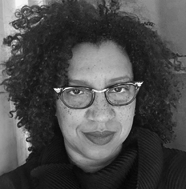Self-Portrait as the Bootblack in Daguerre’s Boulevard du Temple
An erasure of Grant Allen’s Recalled to Life
I don’t believe
I thought
or gave names
in any known language.
I spoke
of myself always
in the third person.
What led up to it,
I hadn’t the faintest idea.
I only knew the Event
itself took place. Constant
discrepancies. To throw them
off, I laughed,
talked—all games
and amusements—to escape
from the burden of my own
internal history.
But I was there
trying for once
to see you,
longed so
to see you.
I might meet you
in the street:
a bicycle leaning
up against the wall
by the window. Rendered
laws of my country
played before my face.
Historical, two-souled,
forgotten, unknown
freaks of memory.
The matter of debts,
the violent death
of a near relation,
and all landing
at the faintest conception.
Dark. Blue. And then.
All I can remember
is when I saw you.
It was you
or anyone else.
The shot
seemed to end
all. It belongs
to the New World:
the Present
all entangled, unable
to move. Everything
turned round
and looked
at you.
Copyright © 2017 by Robin Coste Lewis. Originally published in Poem-a-Day on April 5, 2017, by the Academy of American Poets.
“In what is believed to be the earliest photograph that records the image of a person, (Daguerre’s ‘Boulevard du Temple,’ 1838) the rich shadow of a bootblack kneels on a corner, bent over, shining a customer’s shoe. Though the entire boulevard was very populated when Daguerre shot this canonical photograph, early photographic technology could not record all the city bustle because the camera was too slow—or were we, then, too fast? For me, this photograph has always been such a rich metaphor for the thin border between colonialism and modernism, or history and intimacy. A technical accident, a subservient subject was the only figure Daguerre could visually record, kneeling in the middle of the nineteenth century. And yet.”
—Robin Coste Lewis

